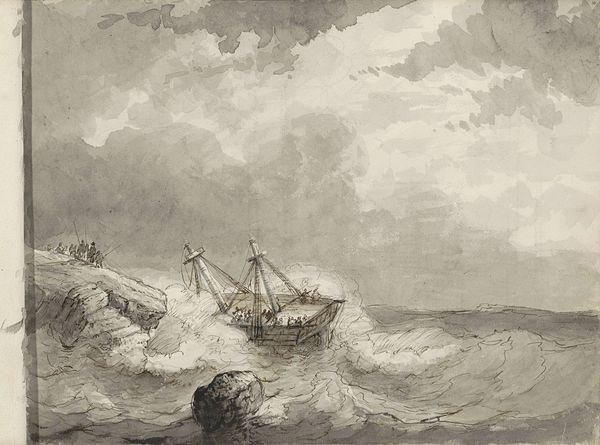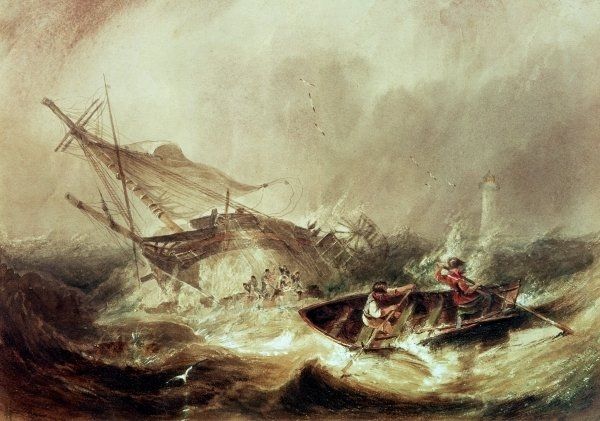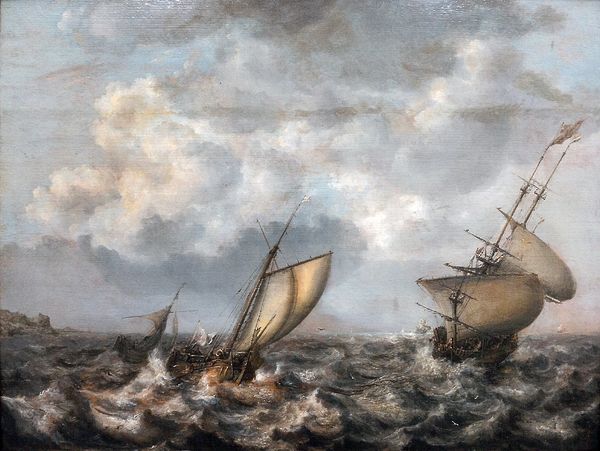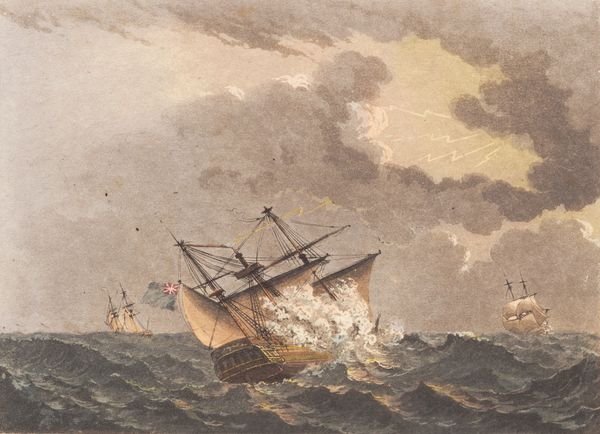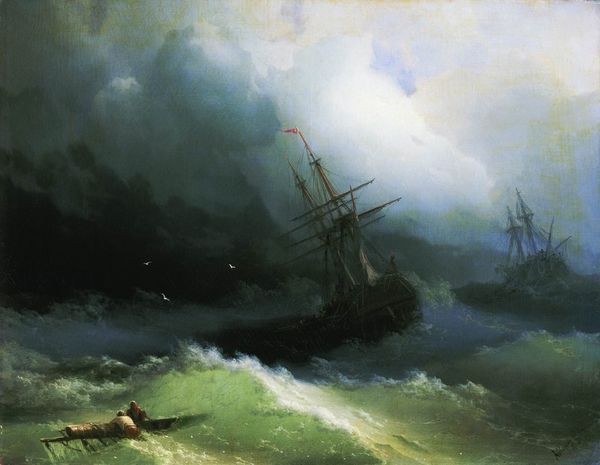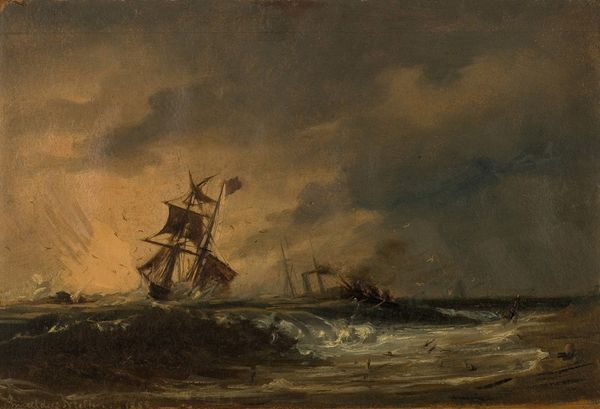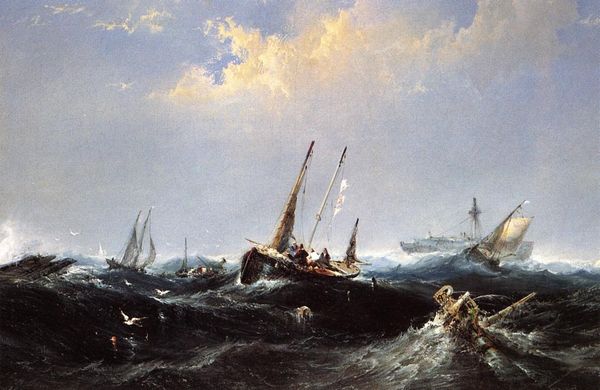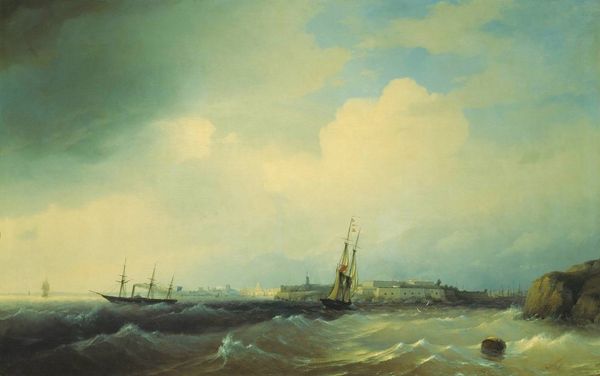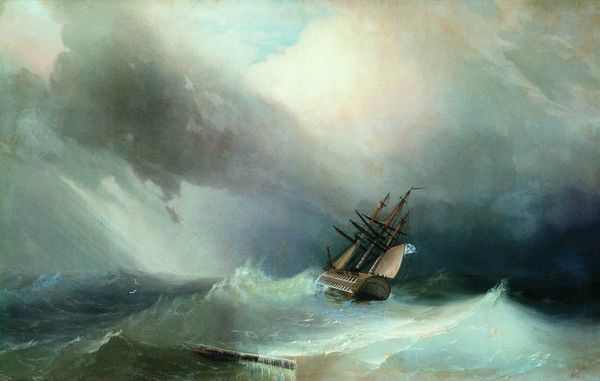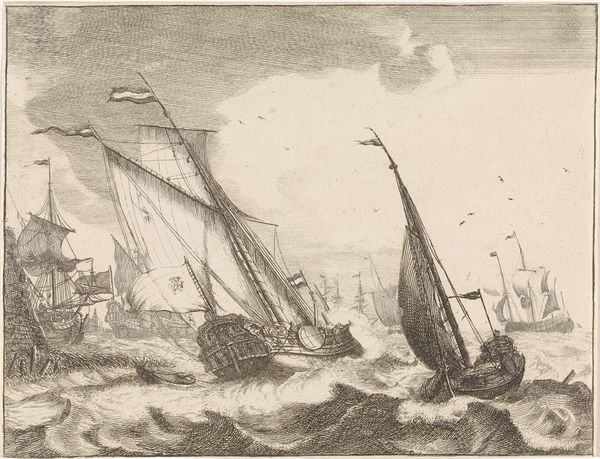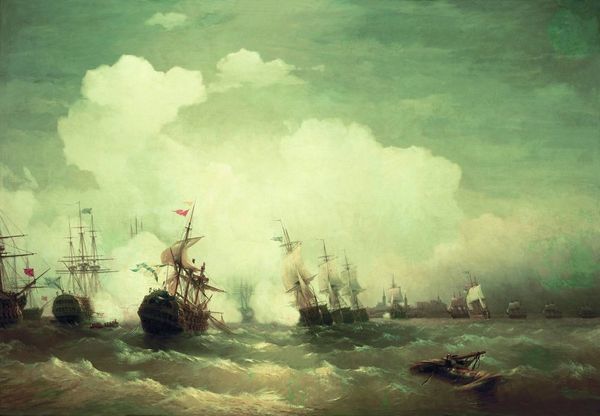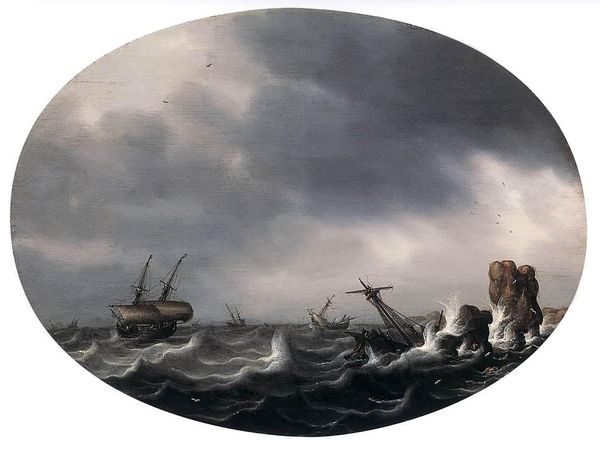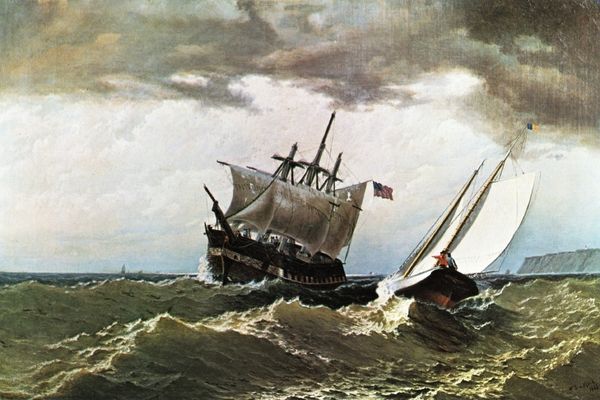
Dimensions: 224 x 123 cm
Copyright: Public domain
Editor: Andreas Achenbach's "Lighthouse at Ostend," painted in 1887 with oils, evokes a real sense of tumultuousness and drama. The waves are so aggressively rendered, almost swallowing the ships. What social and political concerns might have influenced a painting like this? Curator: Achenbach, painting during a time of massive industrialization and social upheaval, could be seen here depicting man's struggle against nature. Note the composition – the lighthouse, representing civilization, stands in stark contrast to the chaotic, overpowering sea. Is this a narrative of human progress, or one of hubris and vulnerability in the face of ecological power? Editor: That’s a powerful contrast! So the ships battling the waves could symbolize human endeavor, but perhaps a futile one? Curator: Precisely. Consider also Ostend's role as a growing port city. Rapid urbanization often brought social disparities and ecological strains. What tensions do you observe here? Who would have been most directly impacted by the dangers depicted? Editor: Definitely the working class, the sailors and fishermen risking their lives on a daily basis. It makes you wonder about their socio-economic status compared to the emerging bourgeoisie enjoying leisurely days by the sea. Curator: Indeed. Achenbach captures not just a scene, but a reflection of power dynamics. The raw power of nature throws into sharp relief the vulnerability of those whose livelihoods depended on it. Did seeing this connection influence your perception of this work? Editor: Absolutely. Now I can read it as not just a seascape, but also a social commentary of the late 19th century! Curator: Precisely. Art serves as a mirror to its time, reflecting its complexities.
Comments
No comments
Be the first to comment and join the conversation on the ultimate creative platform.
